Since Confederation in 1867, official Canadian seals have depicted five reigning monarchs – Victoria I, Edward VII, George V, George VI, and Elizabeth II. Much like currency changes with each reign, the seals change to reflect the current monarch and the old seal is destroyed.
Queen Victoria I

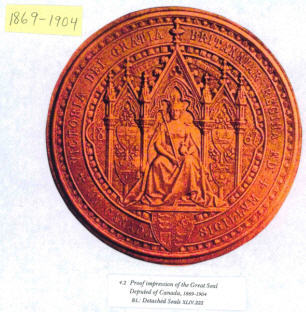
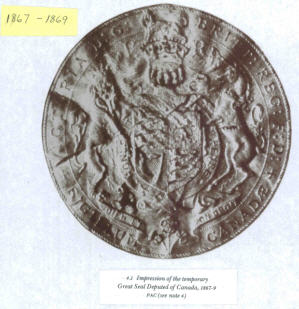
Victoria I, Queen of Great Britain, Ireland and Empress of India was the longest reigning British monarch and during her reign the British Empire became the foremost global power. During her rule, Canadian confederation occurred. Today, Canada celebrates Victoria’s birth every year on the Monday prior to May 25th.
Two seals were used during her reign. The first seal, a temporary one, was commissioned with the creation of the new state of Canada in 1867. The second seal, the first permanent seal, was completed in England in 1869 and delivered to the Governor General of Canada. It was single-sided and showed Queen Victoria seated. This seal bears the coat of arms for Quebec, New Brunswick, Ontario and Nova Scotia, the only four confederated provinces at the time. The year of their confederation (1867) is engraved. This seal is noted for its intricate designed.
King Edward VII

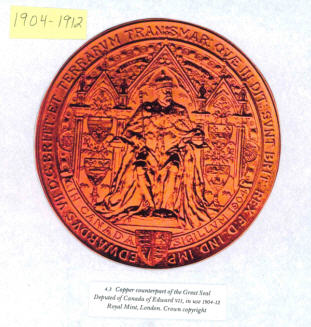
In 1860, King Edward VII took a tour of North America. He inaugurated the Victoria Bridge in Montreal and laid the cornerstone of Parliament Hill in Ottawa. Because his mother Victoria (nicknamed the “grandmother of Europe”) arranged marriages for her nine children and forty-two grandchildren across the continent, Edward was known as “uncle of Europe” since he was somehow related to almost every European monarch.
The third seal was commissioned for Edward VII after Victoria died. This seal is very similar to the previous one having the same gothic canopy over his effigy’s head.
King George V
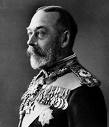
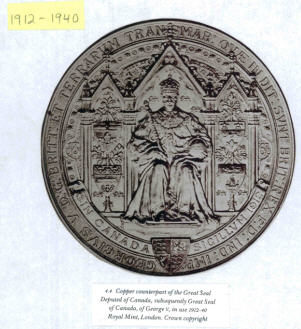
George V ruled for nearly 26 years and was king during WWI when he renounced all German titles and changed his German last name to Windsor. As a young man, he toured around the world while he served in the navy and saw much of the commonwealth that was built during his grandmother’s reign.
The fourth seal was commissioned for George V. Again, this seal is very similar to the previous two. After George died there was no seal made for Edward VIII as he abdicated before one could be finished.
King George VI

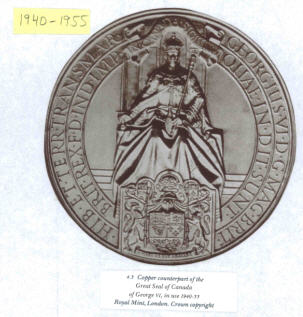
The seal for King George VI showed a complete break in design from the three previous great seals. It has a stark simplicity and is reminiscent of the earliest Anglo-Norman great seals. When the monarchy dropped the title of Emperor of India, George called for a new great seal to be prepared, but he died before it could be finished.
Queen Elizabeth II
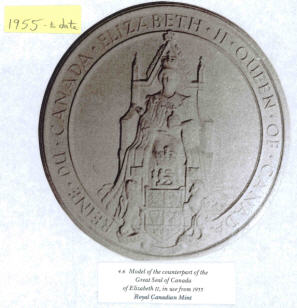
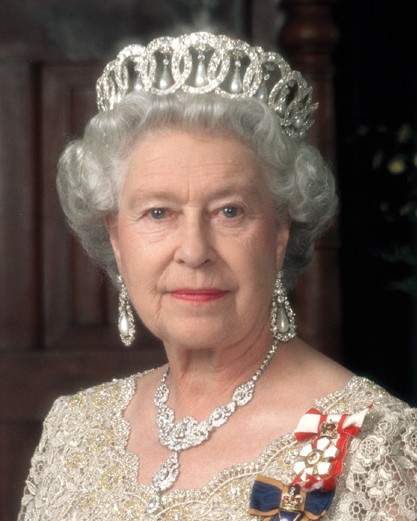
After Victoria I, Queen Elizabeth II is the longest reigning monarch and her rule has seen many sweeping changes as dissolution of the British Empire started before she took reign. She is the second head of the Commonwealth and has toured Canada many times.
Elizabeth II was the first monarch to have the great seal made on Canadian soil, in the Royal Canadian Mint in Ottawa. It was designed by a Canadian artist and was authorized by the Queen in 1955. The Governor General has custody of the Queen's seal. The bilingual inscription reads:
REINE DU CANADA ELIZABETH II QUEEN OF CANADA. Previous Great Seals were inscribed in Latin. It is made of steel, weighs 3.75 kg and is 12.7 cm in diameter.
Learn about the seals ISC uses on official documents here.